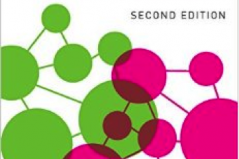What does your selfie say about you?
keywords:
personality / selfie / zero-acquaintance judgment / social media
What does your selfie say about you?
Selfie is a new form of self-expression in this digital age. In this post, I will discuss our research on how selfies reveal the personality of their owners and how people judge others’ personality based on selfies. / more
Bicultural minds: How capable are you in responding culturally appropriate?
keywords:
culture / bicultural mind / cognitive flexibility / bicultural competence
Bicultural minds: How capable are you in responding culturally appropriate?
When individuals live actively with two cultures (in families, organizations or society at large) they, partly unconsciously, partly deliberately, may change towards acquiring a ‘bicultural mind’. I will discuss here, is whether these individuals are capable of spontaneously producing appropriate responses that fit the expectation patterns of either of their two cultures. / more
Unfair: The New Science of Criminal Injustice.
Unfair: The New Science of Criminal Injustice.
Being perceived as victim of an assault or as a drunk – does it matter to physicians when they treat you? Is it common to lie on purpose to a suspect and invent false evidence to get a confession? Can a suggestive interview create false memories in a witness without her noticing? Is a person more likely to get parole after the lunch break? “Well, maybe, but it should not!” - I believe you agree with me... / more
Why gender neutral toy aisles might help children’s development stay on target
keywords:
gender / toys / development / cognitive skills
Why gender neutral toy aisles might help children’s development stay on target
In this blog post I will discuss how Target’s recent decision to do away with gender specific toy aisles could actually help children develop new cognitive skills, and as well as increase their willingness to play with different types of toys. / more
Experience in Action Games and the Effects on Executive Control
keywords:
video games / action games / executive functions / task switching / dual tasks
Experience in Action Games and the Effects on Executive Control
Many people spend numerous hours a day playing video games. Furthermore, the video game industry is expanding as the number of its clients constantly increases. Surveys show that 58 % of Americans play video games and 25 million Germans play games several times a month. This frequent use of video games occurs independently of gender, education, and income (e.g., BIU, 2012). Many politicians and members of the public media express their concerns about this development and... / more
Why do we so often ignore the influence of situations on behavior?

keywords:
aging / autism / dispositions / fundamental attribution error / mentalizing / social cognition / theory of mind
Why do we so often ignore the influence of situations on behavior?
Situations matter; they have an effect on us all, great or small. We are told we should walk a mile in someone else’s shoes, to “look at it from my point of view,” and would never dream of swearing in the principal’s office. So why are we so quick to judge others’ behavior as if the situations they find themselves in are irrelevant? Imagine you are walking... / more
Why do we still have a cognitive bias that makes us send innocent people to jail? – Explanations of the confirmation bias
keywords:
confirmation bias / objectivity / miscarriages of justice / criminal justice
Why do we still have a cognitive bias that makes us send innocent people to jail? – Explanations of the confirmation bias
The confirmation bias – seeking and interpreting information to support your pre-existing beliefs – can have tremendous consequences. In this blog, I will explain the existence of the confirmation bias in the criminal justice system and give two possible explanations to why we still have this bias. / more
Does it matter if people are aware of their implicit racial bias?
keywords:
implicit attitudes / racial bias / prejudice
Does it matter if people are aware of their implicit racial bias?
In this blog post, I discuss how people respond to information about their implicit racial bias—automatic attitudes and beliefs that favor one ethnic group over another. Although people can be defensive, emerging research suggests there are benefits to accepting implicit racial bias and being aware of this subtle prejudice. / more
Yielding to temptation: How and why some people are better at controlling themselves
keywords:
self-regulation / self-control / personality / Goals / motivation
Yielding to temptation: How and why some people are better at controlling themselves
Complex Dilemmas in Group Therapy: Pathways to Resolution
Complex Dilemmas in Group Therapy: Pathways to Resolution
A therapist working within the framework of psychodynamic psychotherapy has to concentrate not only on the patient’s story, but also needs to be aware of the ongoing transference and countertransference dynamic, projective identifications and other defense mechanisms. It makes the therapy process quite challenging for the psychotherapist. All these challenges multiply in a group setting, where the therapist has to be aware of the interactions between the clients and him or herself, but also between the clients. Not all... / more


